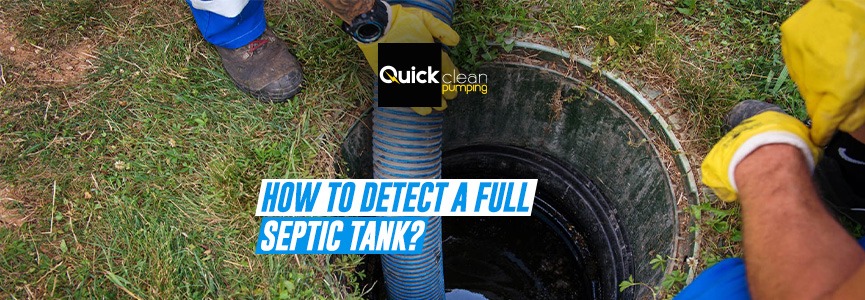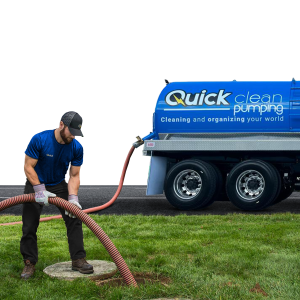Detect a full septic tank
As expert wastewater treatment operators, we know that keeping a septic tank in good condition is crucial to avoid overflows and sanitation problems. In this article, we’ll show you how to spot a full septic tank and give you some tips for maintenance.
Signs that your septic tank is full
- Slow drains
If your drains begin to flow slowly, it could be a sign that your septic tank is reaching its maximum capacity. You’ll know this when your sinks, toilets, and showers slow down. It’s important to pay close attention to these changes and take quick action to avoid problematic overflows in the future.
- Bad odors
Full septic tanks can generate bad odors inside residences and businesses. If you notice an unpleasant odor near the area where the tank is located, it is a clear sign that it needs to be emptied and cleaned. Don’t ignore these odors, as they can prevent your customers from visiting your business.
- Backed-up water in the yard
A full septic tank can cause water to back up in the surrounding area
s. If you notice areas that look greener or wetter than normal, it could be a sign that the tank is reaching capacity and the wastewater can’t be adequately absorbed by the soil.
-
- Dripping pipes
Hearing dripping pipes when washing dishes or flushing toilets can be a more difficult sign to detect. You need to pay attention to this sound, as it may when the sewage is not flowing properly.
- High manhole levels
If your septic system has a manhole, it is advisable to regularly check its liquid levels. If the liquid level is higher than normal, this could indicate that the septic tank is full and needs to be emptied.
You may be interested in: 5 tips to protect your business and storm drain
What to do when these signs are detected?
If you’ve verified that your septic tank is full, it’s time to hire a professional cleaning and maintenance service you can trust. At Quick Clean, we offer specialized pumping services that guarantee a thorough and efficient cleaning of your septic tank. Our highly trained team and new vehicles ensure exceptional results.
Other actions you have to take are:
Minimize Water Usage
– Stop activities that require large water usage, such as doing laundry, running dishwashers, taking long showers, or flushing toilets excessively.
– Using water sparingly helps prevent overloading the septic system, giving you time before it becomes a significant problem.
Locate and Access Tank Covers
– Search your property for the access points or covers of your septic tank. Typically, these covers are found in the yard and may be identified with markers or lids.
– Approach these covers cautiously as they might be heavy and could be situated in potentially unsafe areas.
Call a Professional
– Reach out to a certified septic tank service or a licensed septic tank pumper. Once again, Quick Clean is your best option. We possess the necessary equipment and expertise to safely handle the task.
– Experienced professionals will know how to manage the tank’s contents without causing damage or creating a hazard.
Avoid DIY Solutions
– It’s crucial to resist the temptation to address the issue yourself unless you have the appropriate training and equipment.
– Mishandling or attempting to pump the tank without proper knowledge can result in environmental damage, health risks, or damage to the septic system.
Inspect for Issues
– While the tank is being pumped, the technician might perform a visual inspection to check for signs of damage, blockages, or other potential problems.
– They can assess the tank’s condition and offer advice on necessary repairs or maintenance.
Consider Regular Maintenance
– Schedule routine inspections and periodic pumping of your septic tank according to the manufacturer’s or professional’s recommendations.
– Regular maintenance helps prevent issues by ensuring the system is functioning correctly and doesn’t become overwhelmed.
You may be interested in: How to choose the right pumping service?
Limit Heavy Water Usage After Pumping
– Following the pumping procedure, it’s advisable to minimize water usage temporarily to allow the tank to settle and regain its normal operation.
– This brief adjustment period helps prevent immediate overloading and maintains the balance within the tank.
Regular maintenance and careful usage of your septic system are crucial to prevent issues like backups, odors, or damage to your property. Consulting professionals and adhering to their recommendations is the best approach to safeguard your system’s functionality and your property’s integrity.


